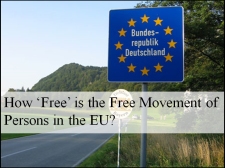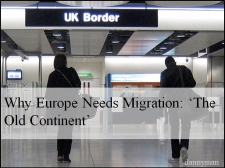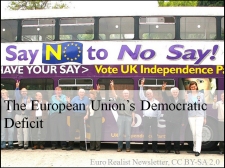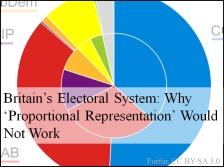Commentary by Etienne CAMUS, Gabriella ATKINS and Louis VIS (Traduction Française)
Although it may seem that, since its creation in 1984, the Front National’s (FN) popularity has grown exponentially, an in-depth geographical study of FN support shows that popularity has remained relatively stable since 2002. The imperative of understanding FN support in only enhanced by the looming French regional elections on the 6th and 13th of December and the Presidential elections of 2017. A look at two books by Hervé Le Bras will illuminate our endeavours: Atlas des Inégalités: Les Français face à la crise, and Le pari du FN.

In these two books, Mr. Le Bras clearly explains that the FN’s rise in popularity is strongly correlated to the rise of inequality within French society. He notes that the percentage of FN votes is higher in unstable areas than any other areas. Between the presidential elections of 2002 and 2012, there was a 20% fall in the level of FN votes in the regions of Rhône-Alpes, Alsace, Paris and Toulouse. Indeed these areas are currently experiencing higher education levels, stronger levels of economic growth along with lower unemployment and inequality levels than average . The FN has also had to face a strong decrease in its support base in all of France’s main cities and up to a 10% decrease in most Mediterranean cities. On the other hand, the FN has also witnessed a 50% rise in its support level in the West, North West and rural parts of the country. Therefore, as our first map shows, support for the FN is far from uniform across France. Indeed, it seems to be negatively correlated to a region’s economic growth.

An established view is that FN popularity is directly linked to migration levels. However, it seems that areas with the highest levels of migration are not those with the highest level of support for the FN. Against all expectations, it seems there is no correlation between migration levels and support for the FN. A more detailed analysis of the Paris region even proves that support for the FN is actually lowest in the ‘arrondissements’ or areas of Paris with the highest levels of diversity. Between 2010 and 2012 it appears that the further out of Paris one is, the lower the levels of migration yet the higher the support for the FN. This trend still applies today. We can thus conclude that as we move out of urban areas there is a sharp rise in support for the FN (see map 2). Indeed, the first of our two maps highlights the decrease in the FN’s support base within the eastern and border regions of France but points to a rise in support in the western and more isolated regions of the country. It thus seems that people’s fears towards migration are stronger amongst areas with the smallest amount of migrants. Consequently this suggests that support for the FN is mainly driven by an irrational fear of difference and the unknown, which is exploited by populist propaganda of the party.
Overall, Hervé Le Bras’ research demonstrates that dynamisms and multiculturalism are the two biggest enemies of the Front National. He believes that the party does not actually offer any coherent or realistic political programme. Instead it only offers a simplified answer to complex issues. Rather than providing solutions, the FN only serves to increase people’s irrational fears. History shows that each crisis benefits nationalist ideals and beliefs. However, as François Hollande, the French President, recently told the European Parliament: ‘with each crisis fear appears. We need to live with the fears but not be dominated by’ them. We must distinguish between those votes driven by fear and those driven by reason. Only the latter will bring real solutions…
RELATED ARTICLES:






Have you not heard of white flight? That white people move out as invaders move in? Or consider that people in French areas look at “multicultural” areas and see high criminality, low trust hellholes?
LikeLike
The majority of the French population lives in urban areas, which is also where most migrants tend to live… These very facts contradict your argument completely.
LikeLike
good to know. I have always admired the French for their pro Arab stance.
LikeLike